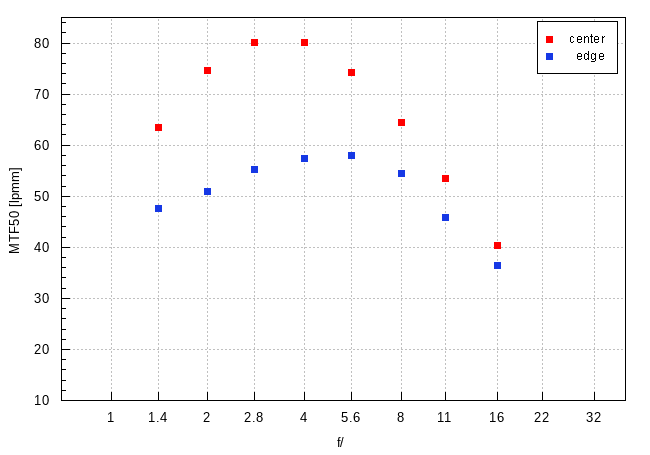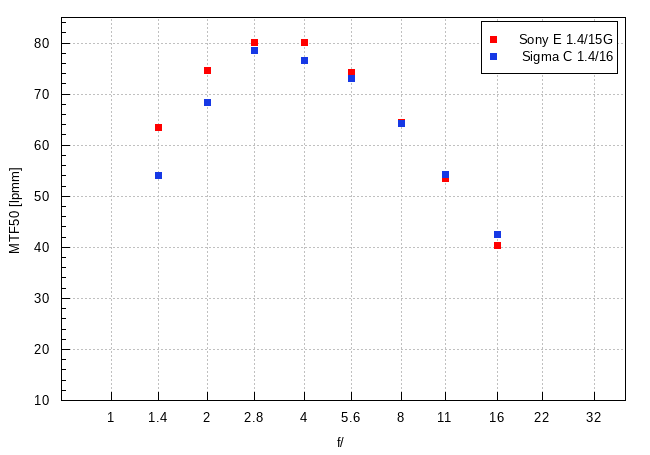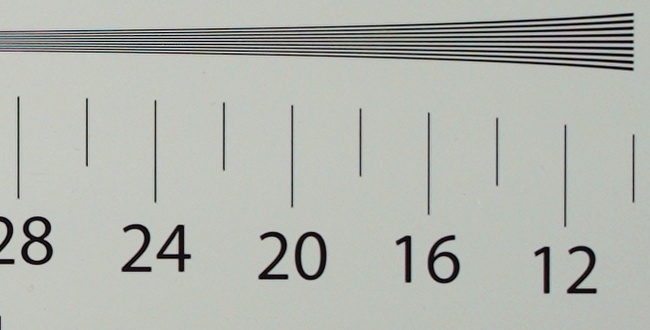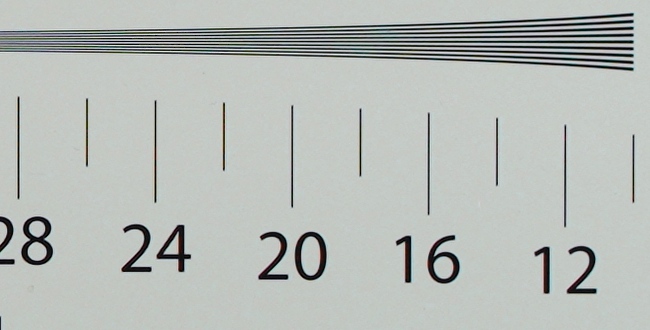Sony E 15 mm f/1.4 G
4. Image resolution
Let's check how the Sony E 14 mm f/1.4G compares – its results in the frame centre and on edges of the APS-C sensor presents a graph below.

Please Support UsIf you enjoy our reviews and articles, and you want us to continue our work please, support our website by donating through PayPal. The funds are going to be used for paying our editorial team, renting servers, and equipping our testing studio; only that way we will be able to continue providing you interesting content for free. |
- - - - - - - - - - - - - - - - - - - - - - - - - - - - - - - - - - - - - - - - - - - - - - - -
When it comes to the frame centre there is no need to talk long hours about the results as they are simply brilliant. Already at the maximum relative aperture you deal with a very high level, that of over 63 lpmm. It guarantees you very sharp images and on stopping down the lens that result only improves, reaching a wide maximum of over 80 lpmm by f/2.8 and f/4.0. As you see these are values worth the best primes as, within the margin of error, they brush against resolution records.
Of course it's also worth stacking up the results of the new Sony model against these of the Sigma C 16 mm f/1.4 DC DN, so praised by us. An appropriate graph can be found below.

According to our expectations, up from the f/5.6 aperture both lenses resolution values are practically indistinguishable because at that place optics aberrations are already cut off and image quality is influenced mainly by diffraction. By f/2.8 and f/4.0 the Sony prevails slightly but the differences are within the margin of error. Still, the most important is the performance by f/1.4 and f/2.0 and there the Sony fares noticeably better than its cheaper rival.
When it comes to the edges of the frame we didn't expect any fireworks – after all the lens's parameters are difficult to correct and its physical dimensions are very moderate. Indeed, the performance on the edge of the frame is distinctly weaker than in the centre but it doesn't mean it is objectively weak. Even near the maximum relative aperture you get results around 50 lpmm so safely above the decency level. The lens reaches the peak of its performance with a level of 60 lpmm so it allows you to get images of very good quality across its very wide field of view.
It's also worth mentioning the fact that, on the edge of the frame and, basically, at every important aperture the Sony fares better than the rival Sigma.
The summary of this chapter can be positive only. Sony managed to produce a fast, wide angle lens that is able to offer you excellent resolution in the frame centre and good performance on the edge – there is nothing left to add.
At the end of this chapter, traditionally, we present crops taken from photos of our resolution testing chart saved in JPEG format alongside RAW files which we used for the analysis above.
| Sony A7R III, JPEG, f/1.4 |
 |
| Sony A7R III, JPEG, f/2.8 |
 |






